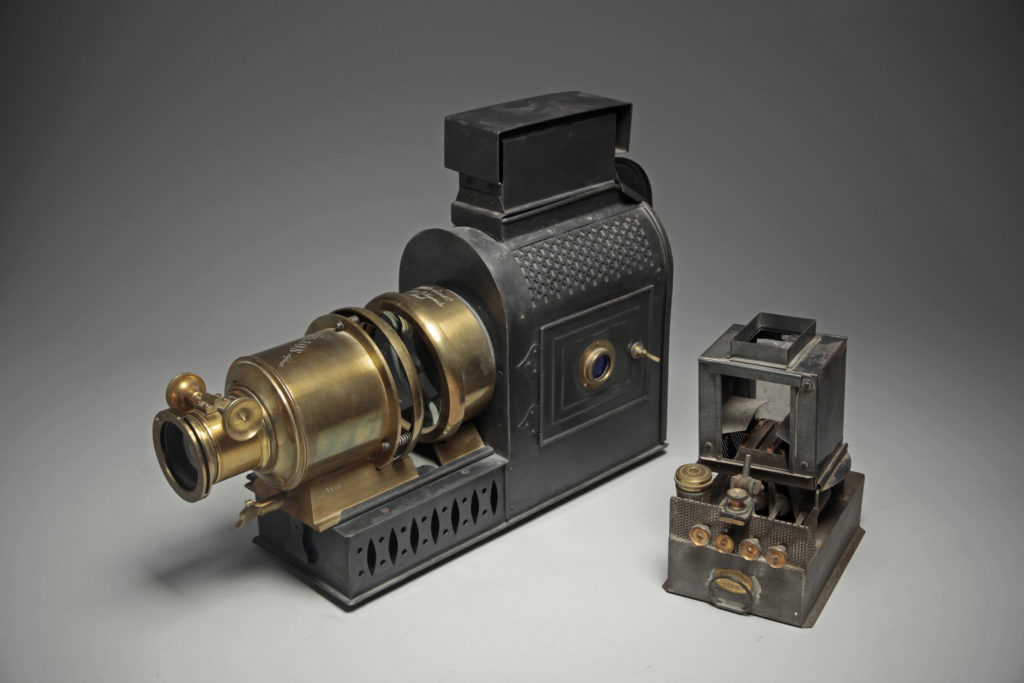Photographic Projection
The popularity of the magic lantern continued to grow during the second half of the XIXth century with the series production of illustrated plates and the growing fashion for photographic plates.
Towards 1850, the Langenheim brothers, established in Philadelphia, perfected photographic pictures designed for projection; they appeared in Europe from the end of the XIXth century. The subjects of the photographic plates are visibly more realistic than their painted counterparts: landscapes, current events, scientific themes…
In France, Duboscq and Molteni remained the main manufacturers of projection lamps and their accessories, and offered a vast selection of plates. However, England was the most successful market.
Projectors of photographic plates could be used in combination with a projection system of opaque documents, and its direct descendant, the epidiascope, was widely used until the 1960s.


